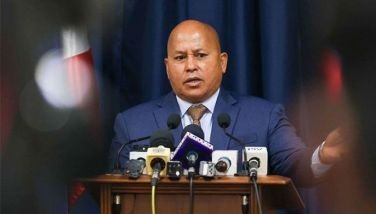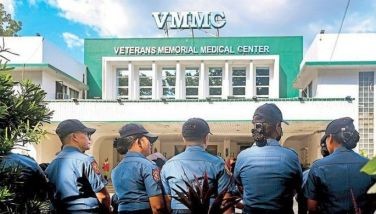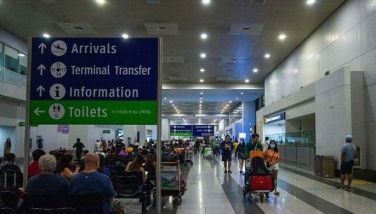Teodoro: Recovery may be slow for typhoon-hit areas
MARILAO, Bulacan, Philippines — Defense Secretary Gilberto Teodoro who is also chairman of the National Disaster Coordinating Council warned the people yesterday of a slow recovery for calamity victims, particularly for those rendered homeless by tropical storm “Ondoy” last Sept. 26 since relocating thousands of families to safer areas could take time.
Teodoro told reporters after inspecting the storm damage in several villages here, that it would take longer before houses could be rebuilt or to relocate to safer areas, while establishment owners could have a hard time recovering.
“Offhand, relocation is important, number two it’s also to facilitate easy credit for enterprises that were damaged, to provide some amelioration whether in loans or in cash for people to rebuild themselves because the hardest hit is the upper middle class subdivisions so I think the local government, together with the proper housing authorities must make a determination if it is still safe to continue building houses in these areas,” he said.
He said that a large portion of about 300,000 evacuees have to be relocated because at the moment, they could not yet return to their homes due to the risks posed by other calamities, such as typhoon “Pepeng” that hit Northern Luzon last Saturday and left 16 people dead in Ifugao, Benguet and Quezon province.
Teodoro said the government would provide assistance of P10,000 for every family whose house was destroyed by the previous typhoons.
He clarified that only those whose damaged residence does not encroach on a river or lakebed would be given easy credit schemes while squatters or informal settlers should be removed at their expense, although they should also be relocated.
“The central bank could open a rediscounting window for mortgage assistance in banks… there are several ways that some credit can be extended to homeowners, and it also helps because it goes around, like, you provide credit for homeowners and there would be construction and employment,” he said.
Teodoro said that after what happened (devastation from the typhoons), many homeowners in the affected areas would want to relocate to safer places.
He said local governments should coordinate with national housing authorities to determine a good relocation site, which could also be provided with livelihood assistance and basic services such as water and electricity.
He said the recent calamity has brought out a lot of issues, such as disaster preparedness, and the urban development plan in the affected areas of Metro Manila and nearby provinces that were ravaged by Ondoy, which left 246 people dead.
Meantime, the National Disaster Coordinating Council (NDCC) reported yesterday that the damage to the country’s infrastructures and agriculture by Ondoy and Pepeng could reach P9 billion.
The NDCC estimate of damage does not include the houses and vehicles damaged by the floods caused by Ondoy in Metro Manila and nearby provinces.–With Marianne Go, Jun Elias, Artemio Dumlao, Charlie Lagasca, Cesar Ramirez, Teddy Molina
- Latest
- Trending
































